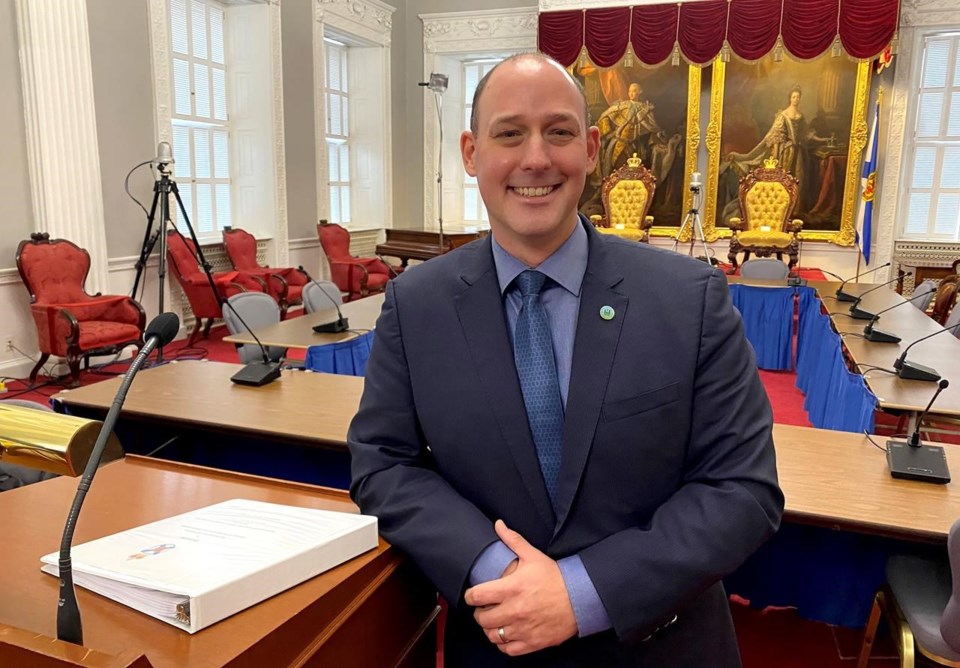HALIFAX — Nova Scotia released a wide-ranging plan Wednesday aimed at helping it meet climate goals enshrined in legislation last year.
The province has legislated an overall goal of cutting greenhouse gas emissions to 53 per cent below 2005 levels by 2030 and achieving net-zero emissions by 2050.
The new plan includes 68 measures, including a new pledge to reduce greenhouse gas emissions from electricity by 90 per cent by 2035 and to reduce home heating oil use by at least 20 per cent by 2030.
“These 68 actions will help us be responsive and prepared for changes in the climate that will impact us in order to avoid further damages and losses,” Environment Minister Tim Halman told a news conference. “This plan is a starting point for a new focus in Nova Scotia on climate action.”
Passed in November 2021, the Environmental Goals and Climate Change Reduction Act also pledged to have 80 per cent of the province’s energy supplied by renewable sources by 2030 and to have zero-emission vehicles account for 30 per cent of vehicle sales by 2030.
To help with vehicle emissions, the new government plan pledges to build more electric vehicle charging stations across the province and to increase the number of zero-emissions vehicles and e-bikes through rebates and public education programs.
However, officials acknowledged that negotiations with the federal government aimed at improving vehicle availability in the Atlantic region will be key to making battery-powered cars a widespread reality in the province.
The plan includes a ban on the installation of oil-fired heating equipment in new buildings and homes by 2025 and the adoption of current national building codes. There is also a call to increase the amount of renewable energy used for electricity generation by building at least 500 megawatts of new local, renewable energy by 2026 and an additional 50 megawatts of new community solar. An action plan for the development of green hydrogen is also to be created by next year.
“The plan will help Nova Scotians reduce their greenhouse gas emissions, save on their energy bill and prepare for the impacts of climate change,” Halman said.
The minister said a key to the plan is accountability with the government committed to reporting annually on its progress and to reviewing and renewing it within five years.
Liberal environment critic Iain Rankin called the plan “solid” but said a “big hole” is the lack of a plan for decommissioning the province’s coal-fired power plants. Electricity generation from coal and other fossil fuels represented 43.4 per cent of the province's total greenhouse gas emissions in 2020.
“There’s no feasible explanation on how they’ll decommission even one coal plant, let alone all eight of them,” Rankin said.
Marla MacLeod, director of programs at the Ecology Action Centre, also gave a mostly positive review of the plan, saying she is particularly pleased to see government accountability reporting included as part of “clear and actionable items.”
But MacLeod said there is a lack of detail on funding for the actions, and that’s something that “we need to watch.”
Meanwhile, the plan also calls for continued work with neighbouring provinces in order to transfer more electricity across Atlantic Canada through projects such as the so-called Atlantic Loop.
The viability of the proposed $5-billion transmission project, which envisions giving the region more access to Labrador and Quebec hydroelectricity, has recently been in question, but Natural Resources Minister Tory Rushton said talks continue aimed at getting it off the ground.
“That’s an important project to get us over the (emissions) hurdle,” said Rushton. “The federal government has to be at the table with some funding … the conversations at the present time are very encouraging, and hopefully sometime in the new year we will hear an announcement from the federal government.”
This report by The Canadian Press was first published Dec. 7, 2022.
Keith Doucette, The Canadian Press




